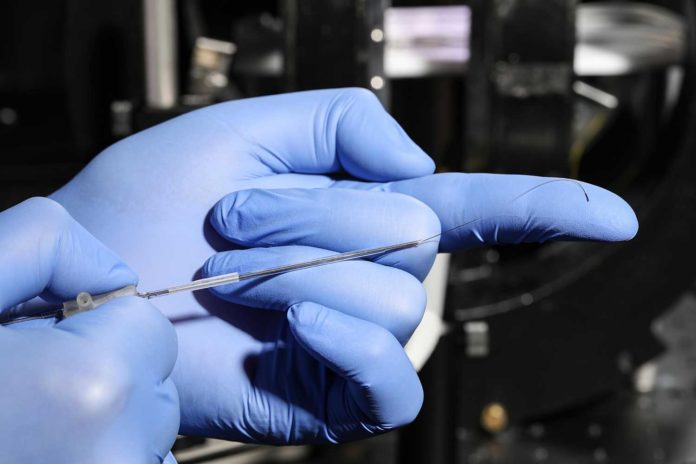Minimally invasive medical procedures, such as endovascular catheterization, have considerably reduced procedure time and associated complications. However, many regions inside the body, such as in the brain vasculature, remain inaccessible due to the lack of appropriate guidance technologies.
At EPFL, Lucio Pancaldi, a Ph.D. student, and Selman Sakar, an assistant professor, have decided to harness hydrokinetic energy (mechanical energy resulting from liquids’ motion) to get to places in the human body without resorting to invasive methods.
Scientists at EPFL‘s MicroBioRobotic Systems (MICROBS) Laboratory, working with colleagues from Prof. Diego Ghezzi’s group, engineered tethered microscopic devices that could be introduced into capillaries with unprecedented speed and ease.
The devices can navigate electronic devices that are smaller than human hair inside blood vessels and reach arterioles.
Scientists developed the device using a magnetic tip and an ultra-flexible body made of biocompatible polymers.
Pancaldi said, “Imagine a fishhook gradually released into a river. It will get carried along by the current. We hold onto one end of the device and let the blood drag it to the most peripheral tissues. We gently rotate the magnetic tip of the device at bifurcations for choosing a specific path.”
“Since no mechanical force is applied directly at the vessel wall, the risk of causing any damage is very low. Moreover, harnessing blood flow could reduce the operation time from several hours to a couple of minutes.”
Both the release of the device and magnetic steering are under computer control. Moreover, there is no requirement for force feedback as the device’s tip doesn’t push against the vessel walls.
Sakar said, “We can envision that a surgical robot will use the detailed map of the vasculature provided by the MRI and CT scans of the patient to guide devices to target locations autonomously. The addition of machine intelligence would transform endovascular operations. Alternatively, a computer program may use the visual information provided by the fluoroscope to localize the device and calculate a trajectory in real-time to facilitate manual operations.”
Journal Reference:
- Pancaldi, L., Dirix, P., Fanelli, A. et al. Flow driven robotic navigation of micro-engineered endovascular probes. Nat Commun 11, 6356 (2020). DOI: 10.1038/s41467-020-20195-z
